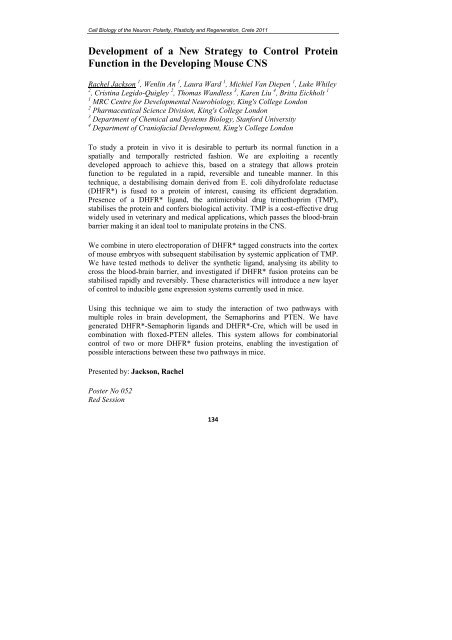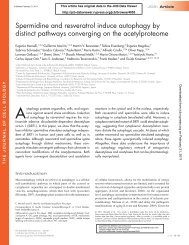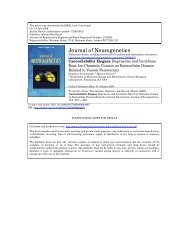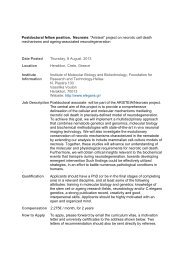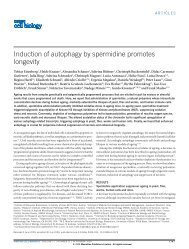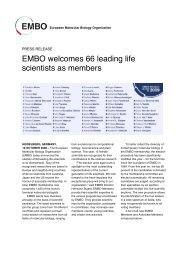CELL BIOLOGY OF THE NEURON Polarity ... - Tavernarakis Lab
CELL BIOLOGY OF THE NEURON Polarity ... - Tavernarakis Lab
CELL BIOLOGY OF THE NEURON Polarity ... - Tavernarakis Lab
You also want an ePaper? Increase the reach of your titles
YUMPU automatically turns print PDFs into web optimized ePapers that Google loves.
Cell Biology of the Neuron: <strong>Polarity</strong>, Plasticity and Regeneration, Crete 2011<br />
Development of a New Strategy to Control Protein<br />
Function in the Developing Mouse CNS<br />
Rachel Jackson 1 , Wenlin An 1 , Laura Ward 1 , Michiel Van Diepen 1 , Luke Whiley<br />
2 2 3 4 1<br />
, Cristina Legido-Quigley , Thomas Wandless , Karen Liu , Britta Eickholt<br />
1<br />
MRC Centre for Developmental Neurobiology, King's College London<br />
2<br />
Pharmaceutical Science Division, King's College London<br />
3<br />
Department of Chemical and Systems Biology, Stanford University<br />
4<br />
Department of Craniofacial Development, King's College London<br />
To study a protein in vivo it is desirable to perturb its normal function in a<br />
spatially and temporally restricted fashion. We are exploiting a recently<br />
developed approach to achieve this, based on a strategy that allows protein<br />
function to be regulated in a rapid, reversible and tuneable manner. In this<br />
technique, a destabilising domain derived from E. coli dihydrofolate reductase<br />
(DHFR*) is fused to a protein of interest, causing its efficient degradation.<br />
Presence of a DHFR* ligand, the antimicrobial drug trimethoprim (TMP),<br />
stabilises the protein and confers biological activity. TMP is a cost-effective drug<br />
widely used in veterinary and medical applications, which passes the blood-brain<br />
barrier making it an ideal tool to manipulate proteins in the CNS.<br />
We combine in utero electroporation of DHFR* tagged constructs into the cortex<br />
of mouse embryos with subsequent stabilisation by systemic application of TMP.<br />
We have tested methods to deliver the synthetic ligand, analysing its ability to<br />
cross the blood-brain barrier, and investigated if DHFR* fusion proteins can be<br />
stabilised rapidly and reversibly. These characteristics will introduce a new layer<br />
of control to inducible gene expression systems currently used in mice.<br />
Using this technique we aim to study the interaction of two pathways with<br />
multiple roles in brain development, the Semaphorins and PTEN. We have<br />
generated DHFR*-Semaphorin ligands and DHFR*-Cre, which will be used in<br />
combination with floxed-PTEN alleles. This system allows for combinatorial<br />
control of two or more DHFR* fusion proteins, enabling the investigation of<br />
possible interactions between these two pathways in mice.<br />
Presented by: Jackson, Rachel<br />
Poster No 052<br />
Red Session<br />
134


